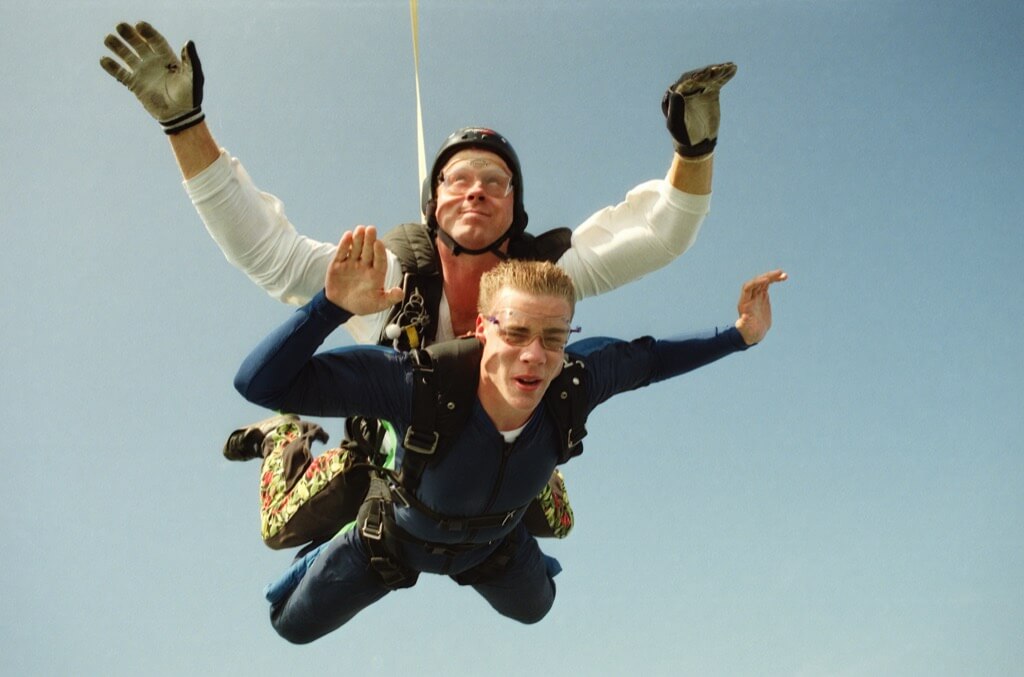In the realms of aviation history and survival tales, there are a few incredible stories of individuals surviving free falls from great heights. Between 1940 and 2008, the Geneva Aircraft Crashes Record Office recorded 157 individuals who made it through plane crashes without a parachute. Remarkably, 42 of these incidents occurred from altitudes surpassing 10,000 feet.
One captivating narrative is of Juliane Koepcke, a 17-year-old who managed not only a 10,000-foot free fall but also endured 10 days in the Peruvian rainforest with just candy as sustenance.
The Physics of Falling
While the concept seems improbable, the principles of surviving a fall from 30,000 feet are quite similar to those from 30 feet. At 1,500 feet, adults falling will hit speeds between 120-140 mph before they reach the ground. This all happens within a window of about 10-12 seconds, a brief moment for taking action. However, higher falls, like from 30,000 feet, come with their own set of challenges such as freezing temperatures and potential oxygen deprivation.
Making the Most of the Fall
If you find yourself in a free fall, it’s essential to keep calm and act quickly. Spreading your body in an X formation, similar to a skydiver’s position, can slow your descent. Additionally, it’s useful to find a falling object or debris to cling to. History shows that individuals who’ve had something to hold onto during their descent, often referred to as “Wreckage Riders,” have a higher survival rate.
Professor Ulf Björnstig from Umeå University suggests that slowing down even by half a meter at terminal velocity can dramatically improve the chances of survival.
Successful Survival Tales
Several incredible stories showcase human resilience and luck:
- Nick Alkemade, a British tail gunner, fell 18,000 feet in 1944. The combination of tree limbs and heavy snow cushioned his fall, resulting in only a sprained leg.
- Victorian Cilliers, an experienced skydiver, survived a 4,000-foot fall onto a freshly plowed field in 2015, though she suffered multiple injuries.
- Michael Holmes, a professional skydiver, survived after both his main and backup parachutes failed in 2006, thanks to landing on thorny blackberry bushes.
Water, while often considered a soft target, can be extremely dangerous. High-speed impacts with water can be as harmful as hitting a solid surface.
Landing Strategies
According to data from the FAA and NASA, the most effective way to absorb the impact is a sequence landing: foot, calf, thigh, buttock, and shoulder. The recommendation is to land on your feet with all joints bent, then allow your body to crumple and absorb the shock. Protecting your head is vital, so wrapping your arms around it is a good precaution.
Mind the Altitude
Fun Fact: If you ever find yourself free-falling from an aircraft, the tactics to enhance your survival chances are surprisingly similar whether you’re plunging from 30,000 feet or just 30. Brace yourself and keep your cool – altitude is just a number!
Embrace the X-Factor
Fun Fact: To slow your descent during a free fall, spread your body out in an X formation. This skydiver’s stance can reduce your speed and grant you a few more precious moments in the air to plan your next move. It’s all about using your body wisely!
Be a Wreckage Rider
Fun Fact: Grabbing onto debris or falling objects can double your odds of surviving a high-altitude plunge. So, if you see some plane wreckage floating nearby, make it your best friend. Remember, in the skies, even a bit of debris can be your life-saving companion.
Use Nature’s Cushions
Fun Fact: Nature often provides the best landing pads. Deep snow, tree branches, or even freshly plowed fields have saved free-fallers in the past. So, if you’re plummeting from the sky, aim for Mother Nature’s softest spots. She’s got your back!
Water’s Deceptive Softness
Fun Fact: While water might seem like a soft landing spot, it can be as solid as concrete if you hit it from a great height. However, if you must choose between land and water, remember to break the surface tension with your feet first. Just think of it as an extreme dive!
Master the Impact Sequence
Fun Fact: Should you find yourself about to make a sudden ground introduction, there’s a sequence to follow to maximize your chances of survival. Landing the foot first, then the calf, thigh, buttock, and finally the shoulder can distribute the impact. So, think of it as a crumple dance, and let your body groove to the survival rhythm!
Protect that Brain of Yours
Fun Fact: When in free fall, your brain is your best asset. Always shield your head, wrapping your arms around it if possible. It’s like giving yourself a reassuring hug in mid-air – a little self-love goes a long way in survival situations!
Helpful Strategies To Deal With Your Free Fall
- Stay Calm in High Altitudes
First and foremost, should you find yourself in the terrifying situation of a free fall, it’s crucial to keep your composure. Whether you’re dropping from 30,000 feet or 30, maintaining a level head can be the difference between life and death. - Adopt the Skydiver’s Stance
Next, position your body into an X or W shape, with arms and legs stretched out. This stance is commonly used by skydivers to slow their descent and stabilize their fall. Remember, it’s all about maximizing your time in the air and minimizing your descent speed. - Seek and Secure Falling Objects
During your descent, be on the lookout for any falling debris or objects. Grabbing onto these can significantly increase your odds of survival. Consider them your lifeline in this harrowing situation, even if it’s just a piece of wreckage. - Aim for Nature’s Landing Pads
As the ground approaches, try to steer your body towards softer landing areas. Deep snow, dense foliage, or freshly plowed fields can provide the cushioning you desperately need. Use your arms to direct your body, and remember, Mother Nature can be a life-saver! - Beware of Water’s Hard Surface
If water appears to be your only landing option, be wary. At high speeds, water can be as unforgiving as concrete. If a water landing is inevitable, try to break the surface with your feet first, and avoid bellyflopping at all costs. - Master the Landing Technique
Prepare yourself for impact by following the recommended sequence: land on your feet first, progress to your calf, then your thigh, followed by your buttock, and finally your shoulder. Distributing the force of the impact can significantly reduce injuries. - Prioritize Head Safety
Last but not least, always protect your head. Tuck it in and wrap your arms around it. Your brain is the most crucial organ in these situations, and shielding it can spell the difference between life and severe injury. Remember, safety first, especially when it comes to your noggin!
For more detailed accounts and insights, visit our contact page.




